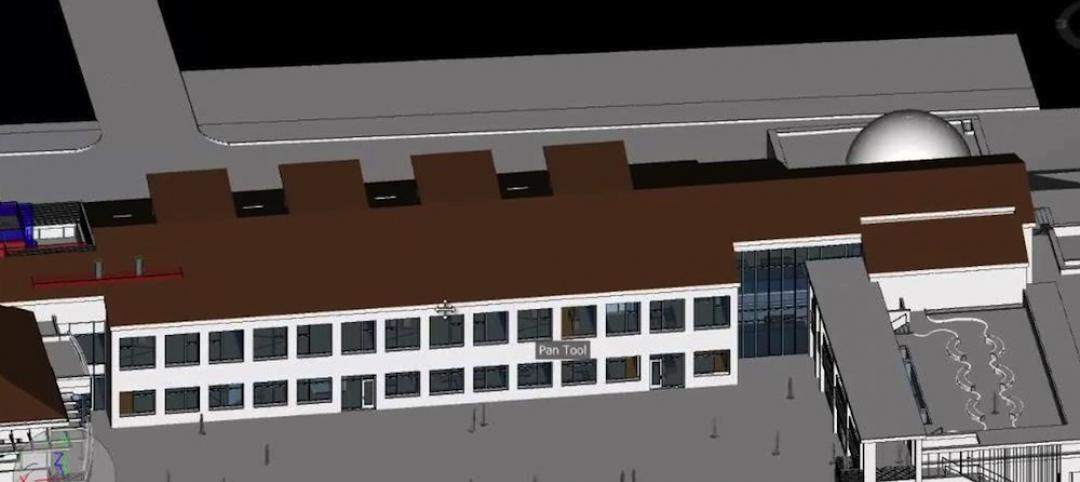The ubiquity of animated GIFs on the Internet is sure to be familiar to anyone who spends a lot of time on the web, and while the image format lends itself perfectly to quick hits of animals doing funny things or people paying an often times humorous price after making a questionable decision, GIFs can also be very useful tools.
News outlet websites have been using them for years to trim the fat and show only the most important information. Did an athlete do something unbelievable? Use a GIF to show the exact moment it happened. Was there a police chase that ended in a spectacular crash through a store window? Put the window crash in a GIF and bring the reader right back to reading the story.
A GIF has the ability show a lot of information quickly and in a simple format, which is the exact reason why, as ArchDaily reports, they can make such useful tools to improve an architect’s project presentation. In fact, ArchDaily has come up with seven different ways animated GIFs can be applied to and improve upon a presentation.
In the same way a GIF can be used to show the exact moment the athlete hit that milestone homerun or precisely when the car crashed through the window, architects can also use GIFs to eliminate all the extra data and focus attention on the main asset, ArchDaily’s Danae Santibañez explains.
As a presentation tool, animated GIFs can be used to exhibit:
- Context
- Design concept
- Spatial relationship between levels
- Detail
- Program
- Construction and structure
- General project view
For example, to show the context in which a building will exist (meaning the specific surrounding environmental characteristics) in one drawing can quickly lead to something more closely resembling a page out of a Where’s Waldo book than architectural plans. An animated GIF, however, can clean up and simplify the presentation while still showing the crucial information:
 GIF courtesy GRND82 via ArchDaily
GIF courtesy GRND82 via ArchDaily
While GIFs may have a bit of a never-ending duck season/rabbit season debate going on with how to pronounce the word (is it a hard <g> or a soft <g>?) that even the creator of the format was unable to completely settle, their usefulness as a presentation tool to aid in clean, simple project presentations is not quite as contentious.
Read the full list of ways to use animated GIFs in presentations here.
Related Stories
BIM and Information Technology | Jun 7, 2016
6 ways smart AEC firms are using computational design methods
Rapid prototyping, custom plug-ins, and data dashboards are among the common applications for computational design.
BIM and Information Technology | May 20, 2016
AIA and Autodesk introduce new feature to automate 2030 Commitment reporting data
The new automated connection will allow the more than 350 AIA 2030 committed firms to report their project and portfolio performance to the DDx directly from Autodesk Insight 360.
AEC Tech | May 10, 2016
Thornton Tomasetti launches new tech company
TTWiiN initially features six products and will add more via its own incubator.
Sponsored | BIM and Information Technology | May 10, 2016
Advanced laser scanning technology supports data collection and modeling efforts for Missouri’s Iatan 1 Power Plant
For the installation of a new heat exchanger, the power division of Black & Veatch contracted an engineering firm to laser scan the site, make a piping model in Autodesk® Revit®, and export it into AutoCAD® to deliver results.
AEC Tech | May 9, 2016
Is the nation’s grand tech boom really an innovation funk?
Despite popular belief, the country is not in a great age of technological and digital innovation, at least when compared to the last great innovation era (1870-1970).
Big Data | May 5, 2016
Demand for data integration technologies for buildings is expected to soar over the next decade
A Navigant Research report takes a deeper dive to examine where demand will be strongest by region and building type.
BIM and Information Technology | May 2, 2016
How HDR used computational design tools to create Omaha's UNO Baxter Arena
Three years after writing a white paper about designing an arena for the University of Nebraska Omaha, HDR's Matt Goldsberry says it's time to cherry-pick the best problem-solving workflows.
Drones | Apr 25, 2016
The Tremco SkyBEAM UAV is the first to be approved by the FAA for nighttime commercial operation
The SkyBEAM UAV is used for identifying energy leaks, rooftop damage, deteriorating façades, and safety issues without requiring scaffolding or cranes.
BIM and Information Technology | Apr 21, 2016
U.K. imposes BIM requirement on government projects
U.S. unlikely to follow suit.
AEC Tech | Apr 15, 2016
Should architects learn to code?
Even if learning to code does not personally interest you, the growing demand for having these capabilities in an architectural business cannot be overlooked, writes computational design expert Nathan Miller.

















